
The 7 Best Exercises For Your IT Band

Posted on 27 Oct, 2020

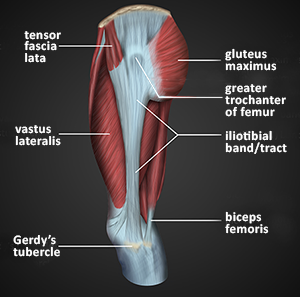 Runners know all too well that any sort of sharp pain—whether it’s in the shins, knees, or ankles—can put a sudden end to training days. One of the most common running injuries is illiotibial band (IT band) syndrome, which occurs when the IT band becomes inflamed. The result: a sharp pain that radiates outside your knee that can stop you in your tracks.
Runners know all too well that any sort of sharp pain—whether it’s in the shins, knees, or ankles—can put a sudden end to training days. One of the most common running injuries is illiotibial band (IT band) syndrome, which occurs when the IT band becomes inflamed. The result: a sharp pain that radiates outside your knee that can stop you in your tracks.
So where is the IT band exactly? It’s a thick, fibrous band of connective tissue that runs down the outside of your thigh, originating from your gluteal muscles and tensor fascia latae (TFL) and ultimately connecting just below your knee to your tibia. ITBS affects both seasoned and beginner runners, and if not managed correctly, it can become an ongoing and chronic injury.
What Causes IT Band Syndrome
Because the IT band is so intricately connected to the gluteal muscles, when your glutes are weak or tired, the result is often decreased knee stability, meaning your knee can be pulled either inward or outward excessively.
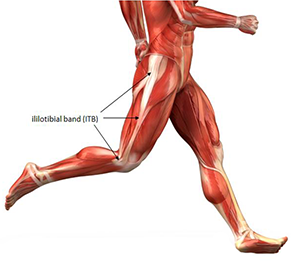 A weak butt is simply a side effect of our modern lifestyles: too much sitting and not enough strength training. On the other hand, fatigue can be caused by overtraining: increasing your mileage too quickly or running too fast before you’re ready.
A weak butt is simply a side effect of our modern lifestyles: too much sitting and not enough strength training. On the other hand, fatigue can be caused by overtraining: increasing your mileage too quickly or running too fast before you’re ready.
The good news? When it comes to ITBS, prevention is definitely the best medicine. Studies have shown that strengthening your hips and glutes is one of the most effective ways to prevent ITBS. But if you're already injured, don’t panic. There’s still plenty you can do to help treat your injury and prevent it from recurring.
The ITBS Rehab Routine
If you’ve been diagnosed with ITBS, the first thing you need to do is stop running—completely—for seven to 14 days.
But just because you’re not running doesn’t mean you should be sitting on the couch! Like most running injuries, recovery requires some active work. These exercises are specifically designed to treat ITBS and get you back to running healthy.
Perform these moves every other day while injured, and use the alternating days for core work or other strength exercises that don’t aggravate the area. This routine can help heal your IT band injury within a week or two if it’s a minor case. (If the pain persists, find a doctor who specializes in running injuries.) For the workout:
- You'll need a piece of rubber tubing, also called a therapy band or theraband, for extra resistance. (Start with low or medium resistance bands and move to a stronger resistance when it becomes too easy.)
- Modify the number of reps or take extra time between exercises if necessary.
- If you don’t currently have ITBS, you can do this routine once a week for prevention.
 1. Lateral Leg Raise
1. Lateral Leg Raise
Lie on your right side with a theraband around ankles. Lift your left leg to about 45 degrees in a controlled manner, then lower. Do 30 reps per side.
 2. Clamshell
2. Clamshell
Lie on your right side with your knees together and a theraband around lower thighs. Your thighs should be about 45 degrees from your body and your knees bent at 90 degrees. Open your legs like a clamshell without moving your pelvis; keep it slow and controlled. Do 30 reps per side.
 3. Hip Thrust
3. Hip Thrust
Lie faceup with your knees bent and feet on the ground. Lift one leg so your weight is on the opposite leg and your back. Using your glutes, lift your hips, then lower. Do 25 reps per side.
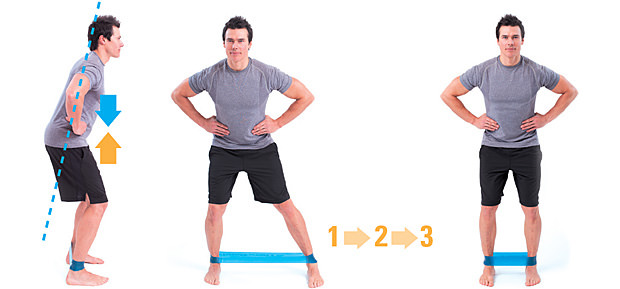 4. Side Step/Shuffle
4. Side Step/Shuffle
Place a theraband around your ankles (the band should be tight enough so it provides constant resistance). With knees slightly bent, take 10 lateral steps. Still facing the same direction, take 10 more steps back to starting position. That’s one set. Do 5 sets of 10 steps in each direction.
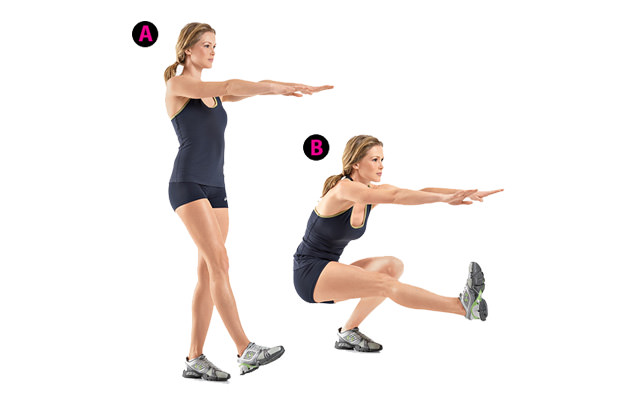 5. Pistol Squat
5. Pistol Squat
Stand with feet hip-width apart, knees slightly bent. Lift your right foot off the ground and extend it forward. Lower into a squat position, sending hips back as if sitting back into an imaginary chair with knees safely positioned over feet. Return to starting position. Do 10 reps per side.
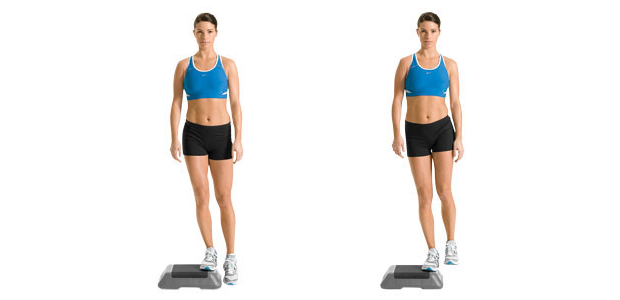 6. Hip Hike
6. Hip Hike
Stand on your right foot. With your pelvis in a neutral position, drop the left side so it is several inches below the right side of your pelvic bone. Activate your right hip muscle to lift your left side back to starting position. Do 20 reps per side.
 7. Iron Cross
7. Iron Cross
Lie faceup with your arms out to your sides. Swing your right leg over your torso and up to your left hand. Repeat with your left leg. Do 10 reps per side.
More Recovery Advice
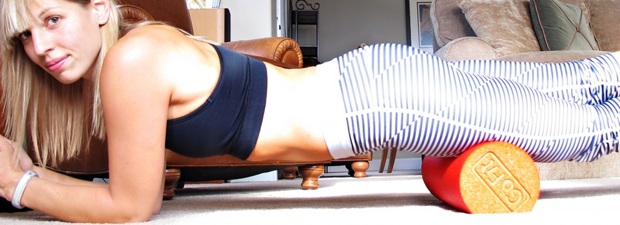 Foam roll—gently.
Foam roll—gently.
A foam roller can help the healing process, but avoid rolling the IT band itself, as it may aggravate it further. Instead, gently roll the hips, glutes, quads, and hamstrings for about one minute per muscle to loosen the muscles and any scar tissue that may be constricting movement.
 Ice it.
Ice it.
Ice may provide some pain relief, especially in the initial stages of your injury. Try icing any painful areas after performing the routine for about 15 minutes.
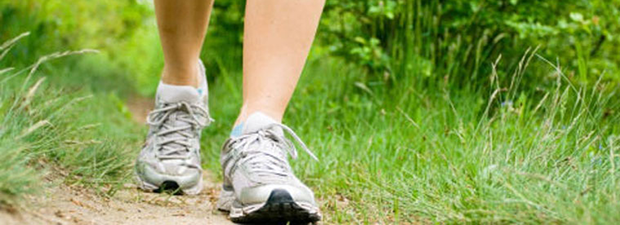 Try a test run.
Try a test run.
If you haven’t felt pain in seven to 14 days, then it’s time for a short, easy test run. Use a treadmill or stick to a flat, even surface (downhill running makes ITBS pain worse because it makes the supporting musculature that caused the injury in the first place to work overtime).
Strength Conditioning For Runners

by Paul Wade

by Peter Magill

by Peggy Brill

by Jay Dicharry
 Nail Every Fitness Goal You Set
Nail Every Fitness Goal You Set How Closely Do You Really Need to Follow a Race Training Plan?
How Closely Do You Really Need to Follow a Race Training Plan? How To Start Running With Minimalist Footwear
How To Start Running With Minimalist Footwear Superfoods That Are Making A Comeback
Superfoods That Are Making A Comeback










